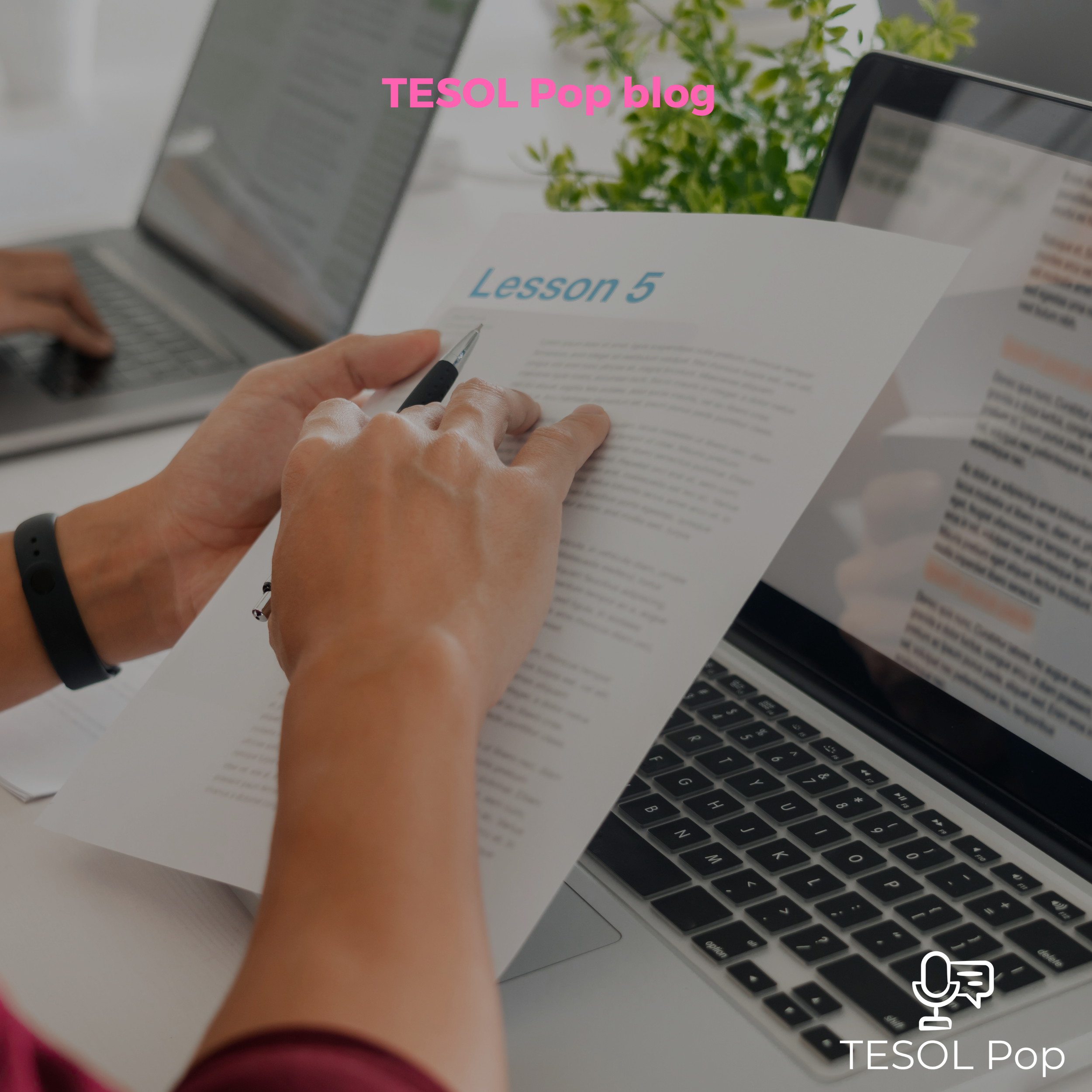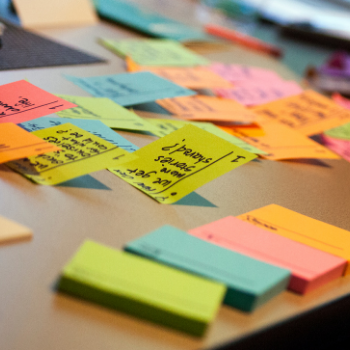Using Engage-Study-Activate (ESA) for Lesson Planning
One of ELT's most well-known staging models is Jeremy Harmer’s Engage, Study, Activate (ESA). In my experience, this model is a useful bridge between the very linear Present, Practice, Produce and more flexible ways of planning lessons. This blog aims to introduce this ESA to teachers looking for more flexibility in their planning.
What are the components of ESA?
Component 1: Engage
The engage component is concerned with arousing students’ interest in the lesson. Harmer sees this as important in increasing student motivation in the forthcoming stages, where they will learn and use language items. He gives examples of engagement activities as ‘games, stimulating pictures, dramatic stories, amusing anecdotes, etc.’ or making ‘predictions or (relating) classroom materials to their own lives.’
Component 2: Study
The study component involves students learning about new language items, including their meaning, form and pronunciation. Harmer makes it clear that this lesson stage could involve either a teacher-led presentation or a more student-centred discovery task.
One important feature to note about ESA is that as well as activities to clarify the meaning of new language, the study phase includes any kind of controlled practice, such as drills or surveys. Harmer reasons that, in these kinds of activities, students focus on how the language is constructed rather than communication. This is quite different from other staging models, which tend to separate these two types of activity into separate stages.
Component 3: Activate
Contrasted with the study phase, the activate component focuses on communication rather than using any particular language. Harmer states that students should be able to ‘use all and any language which may be appropriate for a given situation or topic’ at this stage. This can be contrasted with the produce stage of PPP, where the emphasis is on freer use of a particular grammar point or set of vocabulary.
Another contrast with other staging models is that the activate stage can also involve receptive activities. Harmer reasons that understanding through either listening or reading also involves students drawing on all their linguistic resources.
It is important to note that not all receptive activities would constitute activation. Activities which focus on listening or reading for a particular language feature (e.g. listening for all the uses of the present perfect, underlining all the adjectives of personality) would belong in the study phase. Meanwhile, those which focus on understanding (e.g. listen to a news item and write down what the criminal did and why, read the description of the dish and tell your partner whether you would like to try it) would be activation.
Staging a Lesson Using ESA
There are three main ways in which ESA can be used to stage a lesson: the ‘straight arrows’ staging, the ‘boomerang’ and the ‘patchwork’.
The Straight Arrows Model
This is the closest staging to a traditional present-practice-produce, going from engagement to language study and controlled use to activation. An example lesson would be:
Engage
Students are asked to remember when they visited a restaurant and had a positive or negative experience.
Study
Students read restaurant reviews and have their attention drawn by the teacher to language features such as ellipsis (‘food was great, atmosphere ok’) and adjectives to describe food (‘the burger was so succulent’).
The teacher distributes some photos of restaurants and food, and students write sentences using the language features just introduced.
Activate
Students write a review of the restaurant they spoke about earlier and post it to a shared document.
Students read each other’s restaurant reviews and decide if they would like to visit the restaurants.
The teacher uses the shared document to give feedback on language use.
The Boomerang Model
This staging is very close to the test-teach-test lesson, starting with activation, followed by a study of the language points that students struggle with in that activation, and then returning to activation to see if students have retained the input they have just received. A lesson using this staging would look something like this:
Activate
Students are asked to choose their preferred holiday destination and note the reasons for their choice.
Students are paired and try to persuade their partners that their destination is better than their partners, and in the end, the pairs should choose one destination.
While this happens, the teacher monitors carefully and looks for areas of difficulty and gaps in students’ knowledge of persuasive language.
Study
The teacher provides feedback and input on the areas identified during the previous activity.
The teacher gives example situations where they may need to persuade someone of something (‘persuade your friend to lend you money’) and asks the students to make sentences.
Activate
Students are re-paired and asked to complete the same activity as in the first stage of the lesson.
The teacher monitors to check for use of the language studied at the previous stage.
The Patchwork Model
This type of lesson separates ESA from many (although not all) other staging models. This type of lesson has no set order in which the stages occur. The staging comes down to the teacher and their beliefs about language teaching. I will outline a lesson structure I have used in the past, which I planned using ESA as a guide to the lesson components:
Engage
Students discuss the most important thing when buying or renting a house or flat.
Study
The teacher shows students examples of how comparatives are used to discuss the differences between houses and flats (‘this one is slightly bigger than the other one’, ‘that one isn’t quite as nice’).
Students use these examples to infer the meaning and form of these types of comparatives.
Activate
Students listen to an audio recording of two people discussing the differences between three different flats and note the differences they hear.
Study
Students are given pictures of different homes and asked to form comparative sentences based on the images.
Activate
Students are given the details of five different homes and asked to decide which one they would like to rent and why they would choose that one.
ESA and Flexibility
As mentioned above, a patchwork lesson gives teachers a framework to plan lessons according to their beliefs about language teaching. The two principles which guided the lesson above were:
That input on a language point before exposure to it through reading or listening will help students to notice and understand it.
That receptive understanding comes before productive use, and ‘activating’ that understanding helps students in later language use activities.
ESA is a great lesson-planning tool for teachers who want to experiment with staging but still want a framework that guides them on the purposes of each stage of the lesson. It also allows teachers to get familiar with the different stages using the linear straight arrows structure before offering more flexibility in the boomerang and patchwork structures.
I want to finish with a question to consider if you are trying ESA for the first time or looking to become more flexible in your use of ESA:
Which of these three different lesson structures would you like to try and why? Share your thoughts in the comments below.
Reference
Harmer, J. (2007). How to Teach English. Harlow, Essex: Pearson Education.






Engage-Study-Activate (ESA) is a lesson staging model that Jeremy Harmer introduced in 'How to Teach English' in 1997. This flexible lesson model enables us as teachers to tailor input and practice to our students' needs.